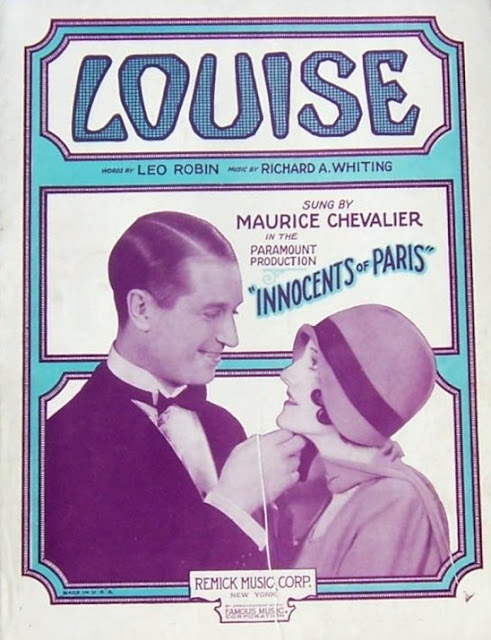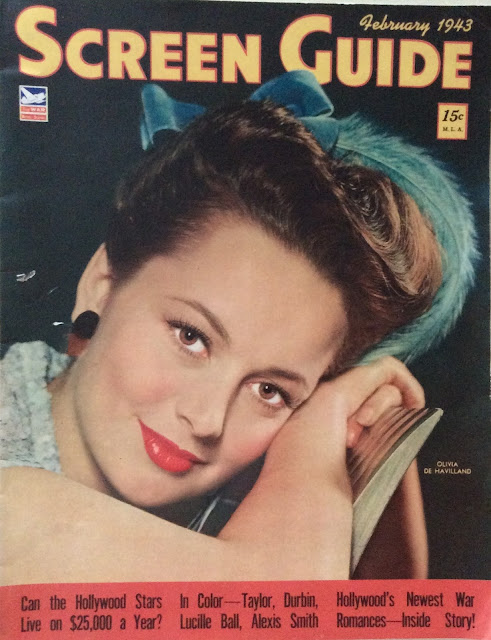Manpower
(1941) is quirky; at times a evoking the iconic working man of the WPA art
images, but somehow never glorifying it.
It is a hard-bitten tale of the unlucky and the foolish, and yet manages
to be unexpectedly humorous in spots. It’s not so much the movie doesn’t know
what it is: it most certainly does, but it proudly and defiantly defies to be
locked into any genre. Its stars George Raft, Edward G. Robinson, and Marlene
Dietrich don’t care if we take them or leave them. Director Raoul Walsh seems to have the same
chip on his shoulder.

Images of great generators and turbines, of high tension
wires and metal towers could provide a visual tribute to the great infrastructure
projects of the 1930s when so much of America was finally electrified, but most
of this background is used as a setting to reflect the esprit de corps of the
cast of daring linemen. They are not
technicians as much as they are roustabouts, and they climb to the heavens with
little to protect them from lightning or keep them from falling, but they are
fatalistic, and bolstered with ego.
The crew is packed with our old friends: Frank McHugh and
Alan Hale as a couple of comic stumblebums; Ward Bond as a wiseacre; Eve Arden,
too-little used in her role as a ten-cents-a-dance girl. The linemen-roustabouts go to work at night in
thunderstorms, and during their “high wire act” they talk about the dames.
The wind, the lightning, the torrential rains, the sizzling
live wires broken and flapping around them make for treacherous work. One older
fellow, of course called “Pop,” played by Egon Brecher, warns of death by live
wires. He is not a climber; he works on the ground. The most sensible guy is
George Raft. His best buddy is Edward G Robinson, in a role markedly different
from his sinister sneering gangsters and his shrewd detectives: he plays a
happy-go-lucky, and hapless lineman desperate for a date, too awkward and
bumbling to be attractive to the world-weary dance hall girls. He is exuberant,
quick-tempered, but joyfully oblivious to the dangers around him. That includes
the dangers from women as well as high wires. The when Raft gets into trouble
upon the tower, Robinson comes to his aid and gets electrocuted. Ward Bond does
a curious form of CPR by pressing on his back and brings him back to life, but Robinson’s
leg is broken, so Edward G goes off to the hospital. His injury is such that he
will not be fit for climbing towers anymore, but his heroism merits a promotion
to foreman. This happy hooligan will stay on the ground from now on and direct
the action.

Pop has a grim chore of his own. He is going to meet his
daughter who has just been paroled from prison. He feels guilty about meeting
her, because he abandoned her and her mother when she was a child and he feels
responsible for her wayward course in life. He asks Raft, because he is the
most sensible and unflappable guy around, to go with him to meet her. The daughter
is played by Marlene Dietrich. Her black beret tells us she is sophisticated
and tough (recall our post
on the black beret in movies here). And glamorous, despite being a person.

There is an interesting scene where they stop to go to a
drugstore so Marlene can pick up some cosmetics. George Raft was sometimes
considered a kind of Humphrey Bogart 1.0 because his fame came along earlier
than Bogart’s and he got a lot of the tough guy roles (and turned down a few
that made Bogart famous). Raft was not the actor that Bogart was; he did not
have his range, and yet there is something so wonderfully cool about Raft in
this movie that I’m not sure Bogart could achieve. Raft is unruffled, even
apathetic about Marlene’s needing to buy lipstick and powder, even steps in to
help her shop, though he is somewhat disgusted by Marlene’s cold reception of
her father. He does not know yet that she has had a hard life because her
father abandoned her in childhood. Raft sits at the soda counter in a drugstore
and orders a soda, with a straw. It is such a tough guy cool thing to do with a completely unconcerned attitude as he if just belted down a Scotch. He is one tough guy, and despite spending
so much time up in the high wires, he is grounded.
All the happy hooligans appear to live together in a
boarding house. They kid Edward G Robinson about his girl troubles. When Pop is
killed on the job, Edward G., as foreman, has the miserable task of having to
tell his next of kin – Marlene Dietrich. As usual George Raft gets drafted to
go along with them because Raft is the sensible one, and just his coolness
steadies the nerves of others. They break the news and Raft is disgusted by
Marlene’s lack of grief. She actually hardly knew her father. But Edward G.
warms up to her in a curiously courtly way. He does not chase her or push
himself upon her the way he does the dance hall girls, but he is very gentle
and feel sorry for her.

She gets a job at pretty much the only place she’s qualified
to work: the dance hall, where we meet the other world-weary ladies including
Eve Arden. Miss Eve refers to one of their clients as “laughing boy,” shades of
her line in Mildred Pierce (1945).
She is hard-bitten and wisecracking, but unfortunately, she doesn’t get quite
the screen time as she did in other films, so it is a promise unfulfilled.
Edward G. pursues Marlene with naïve gallantry. He wants to
buy her a present, so he takes Alan Hale and George Raft to go to a department
store to buy her a négligée. Alan Hale has the funny lines about watching the
live manikins model the clothing. He remarks, “How about some underwear? Can we
see some models?” The movie is filled with sudden and surprising flicks of risqué
dialogue and topical references that keeps the whole story off kilter and rides a fine line between a
sophisticated farce and something utterly daffy. At times we don’t know if we’re
dealing with Oscar Wilde or the Marx Brothers.
At one point Marlene sings in her own inimitable, and rather
indescribable, fashion. George Raft has come to see her to warn her to stay
away from his buddy. The owner of the joint, seeing George’s interest in
Marlene says, “She’s got a great voice, huh?”
To which George responds, “Why don’t you get your ears
tuned.” In one moment Marlene has been presented as a glamorous and exotic
talent and in the very next moment she is insulted.

However, Edward G. proposes, Marlene accepts, not because
she loves him – she tells him frankly that she does not – but with the attitude
that this might be a new turn in her life for the better. After a raucous
wedding reception in a Chinese restaurant with all the gang, the movie shifts
interestingly to Marlene’s domestic abilities, which are considerable. Instead of
showing her as the ex-con no-goodnik who hasn’t the slightest idea how to live
like a decent person, we see she is remarkably domestic. She is an excellent
cook. She keeps their house immaculate. She spoils Edward G. with appetizing
treats and tries to be a good wife to him. Eventually, it comes out bit by bit
that, because her father left her mother, Marlene learned from a very young age
how to keep the home fires burning. She had to take charge to cook, to care for
her mother, to manage the household. When she turned to dance halls and crime
it was not because of the love of the lurid excitement; indeed, that sort of
life bores her silly. It was because she had no other skills and was too honest
to market herself as a wife to the first man who came along.

Deciding on a change of course, she decides to take this
second man who came along.
In another plot twist, Raft is injured at work – the setting
is Southern California but evidently, they have a whole lot of thunderstorms.
Raft recovers in the hospital and when he is discharged, Edward G. insists on taking
them home so that Marlene can nurse him. Raft warms up to her, sees that she is
a nice person and a good wife and he feels comfortable and part of the family.
We see, though he does not, that Marlene is falling in love with him.
Eventually, she sees no hope in the situation but to be honest. She plans to
leave Edward G. and go to Chicago and resume the life of a dance hall girl.
Raft, upset that she would abandon his buddy demands an answer, and keeping
with the honest course, tells him she’s in love with him.
In a final climactic scene, and yet another storm, there is
a showdown in this tragic love triangle and, of course, in true movie fashion
one of them has to go. I’ll give you a break this once and not give you a
spoiler.

Manpower
a good movie to consider for Labor Day in the sense that like so many movies of
the 1930s and 1940s, much of the story involves working men in the setting of
their jobs. (And reminds one of Slim-1937- which we covered here.) Sometimes the job is a theme of the movie, sometimes it is almost
like another character in the movie, but if filmed today, the job would be
relegated to only the setting of the story and not necessarily the meat of the
story. In one sense, the common working man was given greater attention in
movies back in Hollywood’s heyday, but in another sense, it is simply that the
minutiae of everyday life was given greater attention back then. That is what
makes films of that period so fascinating. They are like scrapbooks we can open
and take our time and examine all the little things in the pictures, and have
questions about and imagine all kinds of stories that are sidebars to the main
story, but are just as interesting. One story inevitably leads to another.





















